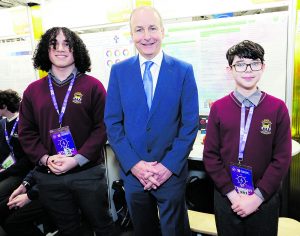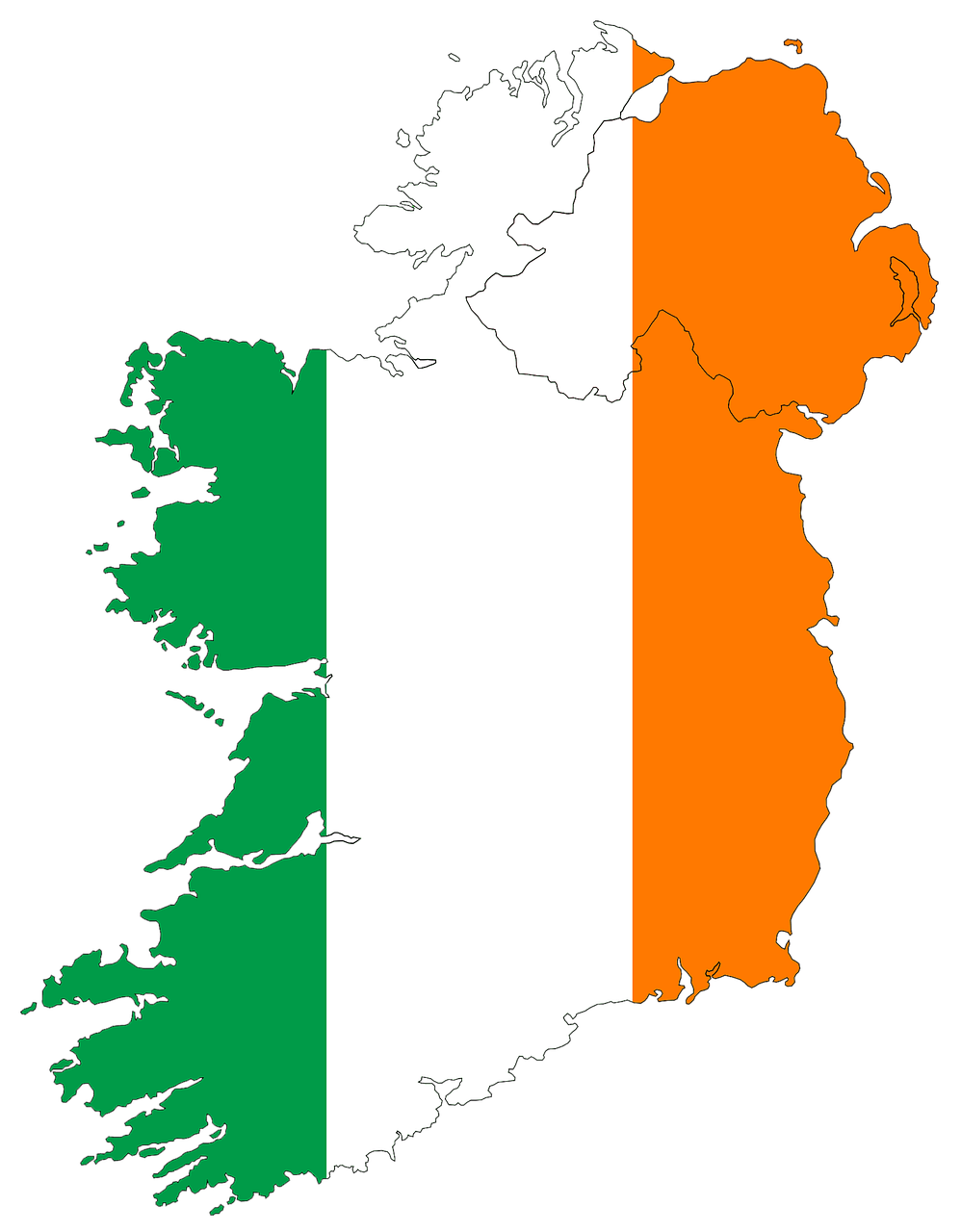
Two local students from Davis College Mallow, Logan Walsh and Adam McCarthy, made a notable impact at the prestigious BT Young Scientist and Technology Exhibition, held at the RDS in Dublin last week. Their project, titled ‘AI Trained Camera for Detecting Quadrupedal Animals’, garnered attention for its innovative approach to integrating artificial intelligence (AI) with real-world problem-solving.
Logan and Adam developed a system that utilises AI to detect animals such as dogs and cats through a camera. The primary goal of their project is to prevent these animals from entering buildings, a challenge faced by homeowners and businesses alike.
The AI system works by identifying quadrupedal animals in real time, allowing for the automatic detection of animals attempting to enter a building. In future iterations, the students plan to enhance the technology further, including the ability to send alerts directly to property owners when an animal is detected inside. The duo’s project also has the potential for broader applications. “With further research, we can expand these solutions to include things like cat flaps, preventing strays from entering homes,” they said.
Logan and Adam’s innovative project did not go unnoticed, as they had the opportunity to meet with Tánaiste Micheál Martin during the competition. The students discussed their research and future plans with the political leader.
The BT Young Scientist and Technology Exhibition, known for showcasing the brightest young minds in Ireland, provided the perfect platform for these students to display their creativity and technical skills. Their project stood out for its practical applications, innovative use of AI, and the potential to make a real-world impact.
Project 2
‘Smart Embedded Clothing for the Visually Impaired’: Rebecca McCarthy, Alisha Akinol and Tina Koni designed wearable electronic clothing for the visually impaired. It uses a series of smart sensors that are wired up to a microprocessor which is programmed to provide feedback to the user of nearby obstacles. This feedback is enabled by strategically placing vibrational motors within the clothing. The intensity of vibration observed by the user is a function of distance between the person and obstacle. The students performed tests of reliability of their system and found it to work well. As their project is a proof of concept, they are now exploring designing their own Printed Circuit Board (PCB) for electrical integrity, and to reduce the existing formfactor of the electronics for ease of use. Well done to the girls for their ingenuity and work ethic!
Project 3
Let’s Get Rolling!
Kinga Kalman’s project is a device to promote physical well-being for the elderly. Kinga has performed surveys on user requirements and is now in the process of creating new features along with established settings for fitness trackers. These features will implement inertial measurement techniques and will include fall detection for the elderly. Falls experienced by the elderly can be distressing and require immediate attention from their support. Calibration of the system using principles from Applied Mathematics and Physics will ensure her system is functioning to address false positives and will alert caregivers of actual falls by text.





